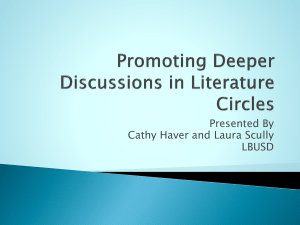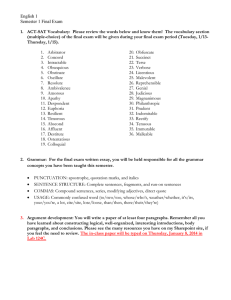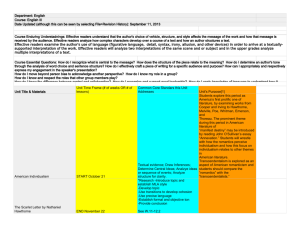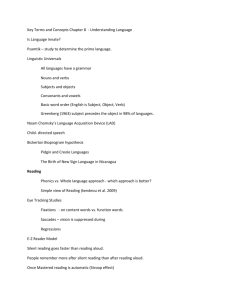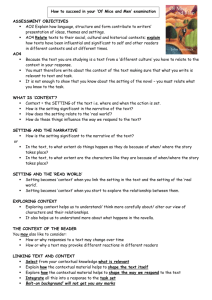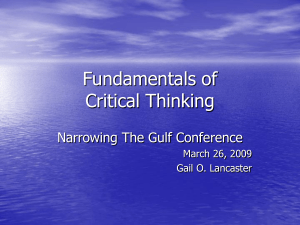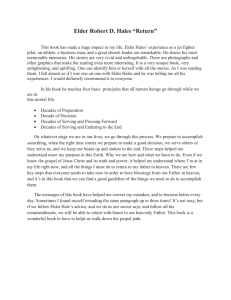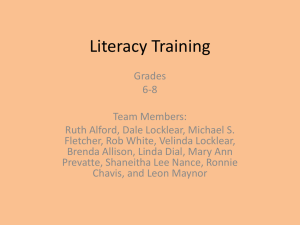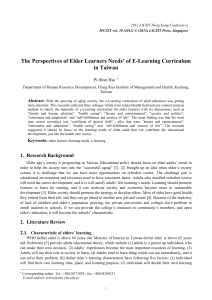Critical Thinking: Close Reading of Texts - Mid
advertisement
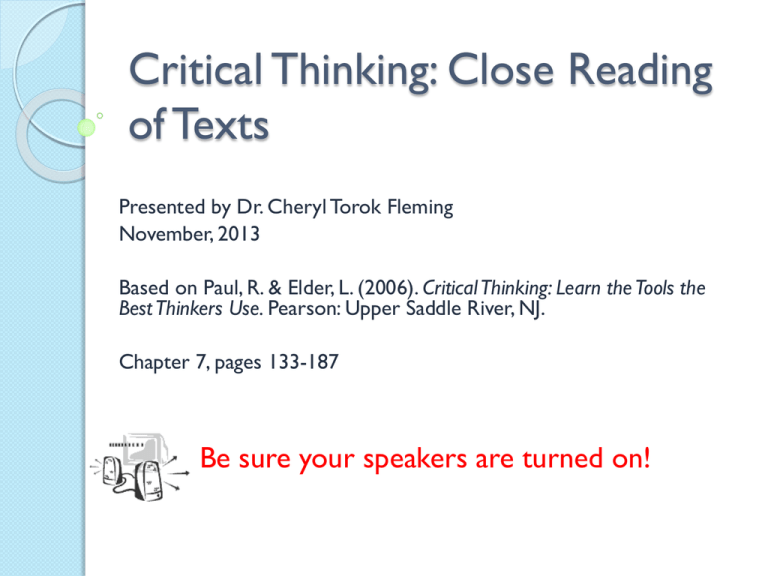
Critical Thinking: Close Reading of Texts Presented by Dr. Cheryl Torok Fleming November, 2013 Based on Paul, R. & Elder, L. (2006). Critical Thinking: Learn the Tools the Best Thinkers Use. Pearson: Upper Saddle River, NJ. Chapter 7, pages 133-187 Be sure your speakers are turned on! Objectives Discuss the importance of reading skills Define close reading of texts. Contrast “deep” reading with superficial reading. Connect close reading with critical thinking. Every book or text is a potential teacher. As readers: ◦ We can access the thoughts and ideas of creative and critical thinkers over time. ◦ We can learn the essential meanings of an unlimited number of teachers whose teachings live on in the material they have written. ◦ We can use these ideas productively in our own lives. Importance of Reading Skills Engage in a disciplined process by which you reconstruct the author’s thinking for yourself. (Paul & Elder, 2006) Understand the author’s meaning well enough to accurately paraphrase and summarize. Tie reading skills to writing and listening skills. Deep Superficial Accurately Vaguely and precisely summarize a text. Analyze and synthesize. Read for understanding. comment on a text. Understand. Skim and scan. Deep v. Superficial Reading Requires the ability to: Clarify purposes Formulate clear questions Distinguish accurate and relevant information Distinguish justifiable from unjustifiable assumptions Identify significant and deep concepts Trace logical implications Identify and think from multiple viewpoints Reach logical inferences or conclusions “By connecting with the mind of another through reading, we can better discover and refine our own thoughts and ideas.” (Paul & Elder, 2006, p. 138) The Best Readers: View reading as intellectual work. Construct a system of meaning when reading a text. Read sentences in relation to each other. Read paragraphs in relation to each other. Relate whole to part and part to whole. Relate meaning of text to own understanding and experiences. The Best Readers: Seek to discover the basic idea behind a text. Relate the ideas of the text to basic concepts or premises of the discipline. Look for the underlying questions of the text material. Preparation to read Read title and introduction to the text. Review chapter headings. Read objectives of the text/ chapter. Scan key vocabulary. Study tables, charts, graphs, diagrams. Look at pictures and read captions. View “callouts” or boxes with information. Read the text or chapter summary. Elements of Thought Purpose of the text Basic concepts Underlying questions Key assumptions of the author Point of view Implications of the text Reasoning Inferences or conclusions Own your Reading: Mark the text! Circle key ideas Underline definitions Write marginal notes ◦ Agree, disagree ◦ Question ◦ Point of view Use symbols to indicate specific problems, ideas, or conclusions Wrap Up Questions Why am I reading this? Are there parts I do not really understand? How can I clarify these parts? Can I paraphrase what I read? Are there key words I need to define or look up? Did I “get” the author’s main point? Were my questions answered? Do I need more time or resources to investigate this topic? Questions? Thanks! 2 Timothy 2:2

